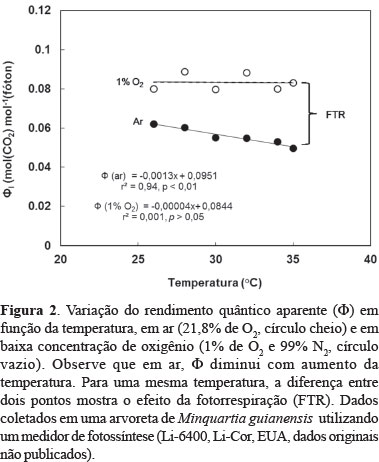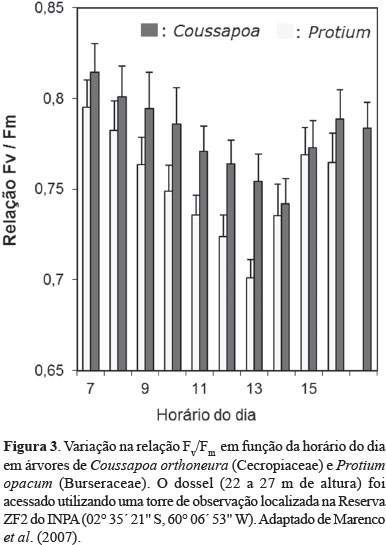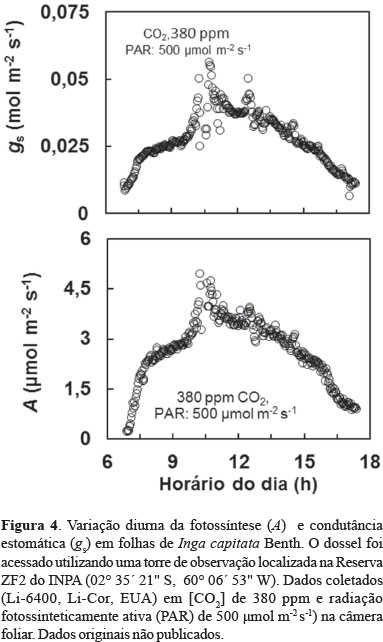The Amazon basin comprises more than six million square kilometers and holds the largest tropical forest in the world. It is particularly important for its biodiversity and for its role in the cycling of water and carbon. Photosynthesis, stomatal conductance and sap flow of Amazon tree species show variation throughout the day following the diurnal variation of irradiance, temperature and vapor pressure deficit. Due to photorespiration, at least 25% of the fixed carbon is returned to the atmosphere. Thus, increases in atmospheric CO2 concentration in the decades to come may have a positive effect on carbon assimilation of the forest ecosystem. Compared to the rainy season, low water availability in dry season and increased vapor pressure deficit (low humidity and high temperature) during the dry period induce stomata closure, which eventually leads to photosynthesis decline. Several studies have shown that Amazonian trees that reach the forest canopy grow at higher rates in the rainy season. Except in years with low rainfall, the forest ecosystem is a carbon sink in the rainy season. More studies are needed to determine how and in what extent specific factors of the physical environment influence carbon assimilation and growth of trees from different functional groups in the Amazon region.
stomatal conductance; water potential; sap flux; forest ecosystem; nocturnal sap flux













